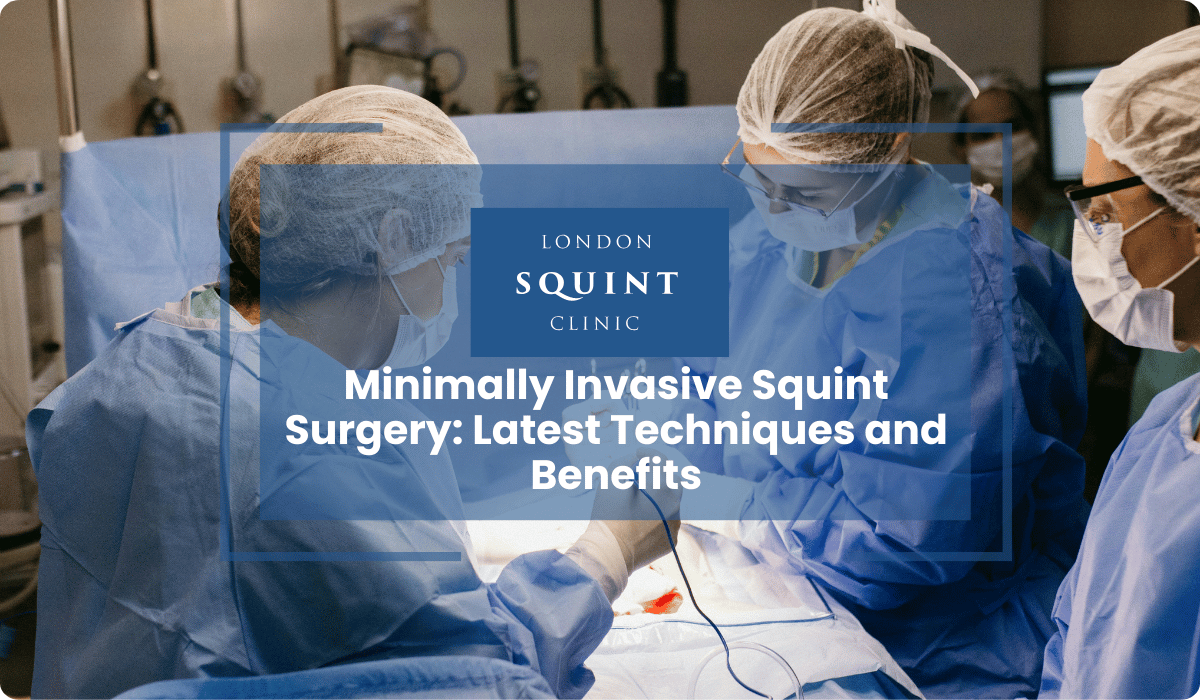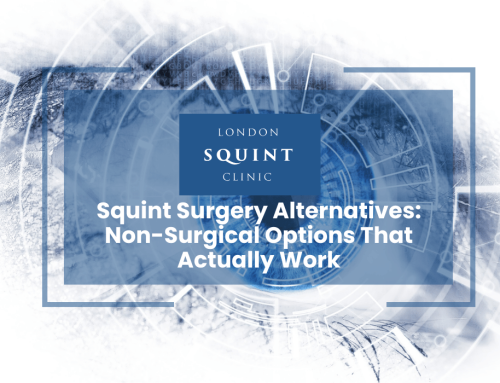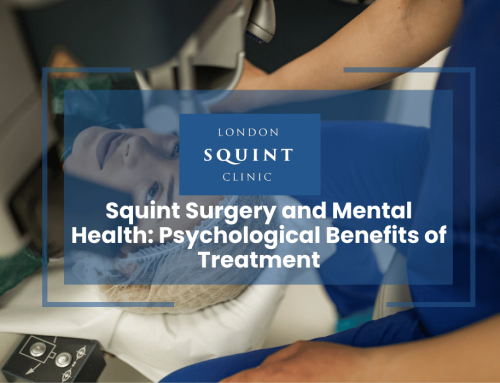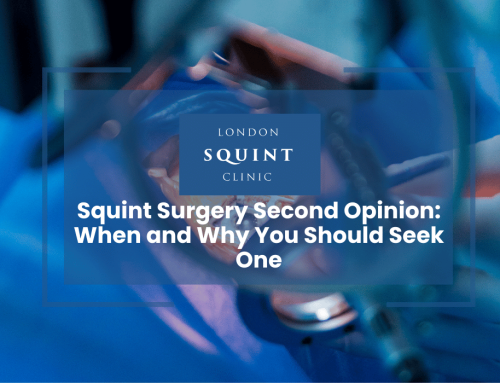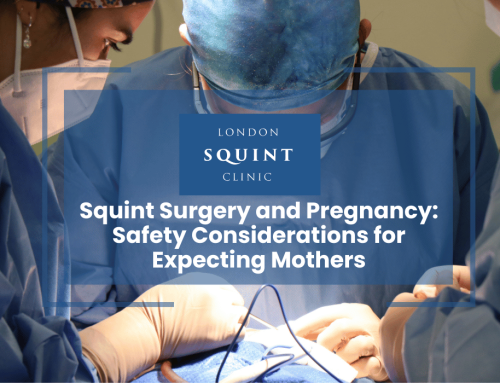Minimally Invasive Squint Surgery: Latest Techniques and Benefits
Minimally Invasive Squint Surgery: A Modern Approach to Strabismus Correction
- Minimally invasive squint surgery offers a refined and targeted approach to correcting eye misalignment, utilizing smaller incisions and specialized instruments.
- Advanced techniques in minimally invasive surgery result in reduced tissue trauma, faster recovery times, and improved cosmetic outcomes compared to traditional methods.
- Patients undergoing minimally invasive squint correction experience less post-operative discomfort, swelling, and scarring, enabling a quicker return to normal activities.
- Both children and adults with various types of strabismus can benefit from minimally invasive surgical techniques, which offer a high success rate and long-lasting results.
- Proper preparation, post-operative care, and regular follow-up appointments with an experienced ophthalmologist are essential for ensuring optimal outcomes and patient satisfaction.
Here is the blog post content with the required sections and formatting:
Table of Contents
- What is Minimally Invasive Squint Surgery?
- Advancements in Modern Squint Surgery Techniques
- Benefits of Smaller Incisions and Faster Recovery
- How Minimally Invasive Methods Reduce Scarring
- Comparing Traditional vs. Minimally Invasive Squint Surgery
- Candidates for Minimally Invasive Squint Correction
- Preparing for Your Minimally Invasive Squint Procedure
- Aftercare and Results of Minimally Invasive Squint Surgery
What is Minimally Invasive Squint Surgery?
Minimally invasive squint surgery, also known as keyhole strabismus correction, is an advanced surgical technique that aims to correct misaligned eyes using smaller incisions and specialised instruments. This modern approach to squint treatment offers several advantages over traditional methods, including reduced tissue trauma, faster recovery times, and improved cosmetic outcomes. By utilising cutting-edge technology and precise surgical techniques, ophthalmologists can perform delicate adjustments to the extraocular muscles responsible for eye movement, effectively realigning the eyes while minimising the impact on surrounding tissues.
Advancements in Modern Squint Surgery Techniques
Recent advancements in squint surgery techniques have revolutionised the way ophthalmologists approach strabismus correction. Minimally invasive methods now allow for more precise muscle adjustments, enabling surgeons to achieve optimal alignment with greater accuracy. These modern techniques often involve the use of specialised instruments, such as micro-incision forceps and adjustable sutures, which facilitate fine-tuned manipulations of the extraocular muscles. Additionally, the integration of advanced imaging technologies, like intraoperative optical coherence tomography (OCT), provides real-time guidance during the procedure, ensuring the highest level of precision and customisation for each patient’s unique needs.
Benefits of Smaller Incisions and Faster Recovery
One of the primary advantages of minimally invasive squint surgery is the use of smaller incisions compared to traditional methods. These tiny incisions, often measuring just a few millimetres, result in reduced tissue trauma and minimise disruption to the surrounding structures of the eye. Consequently, patients experience less post-operative discomfort, swelling, and bruising, leading to a more comfortable and expedited recovery process. The smaller incisions also contribute to shorter procedure times, allowing many patients to undergo squint correction as an outpatient surgery, with the ability to return home the same day. This faster recovery enables patients to resume their normal activities sooner, with minimal downtime and fewer restrictions.
How Minimally Invasive Methods Reduce Scarring
In addition to promoting faster healing, minimally invasive squint surgery techniques also offer significant benefits in terms of reduced scarring. The smaller incisions used in these procedures result in less visible scars, as the tiny openings are strategically placed within the natural creases of the eyelids or conjunctiva. Over time, these scars tend to fade and become nearly imperceptible, ensuring optimal cosmetic results. Furthermore, the precise nature of minimally invasive techniques allows surgeons to minimise the manipulation of surrounding tissues, further reducing the risk of visible scarring or other cosmetic complications. By prioritising both functional and aesthetic outcomes, minimally invasive squint surgery provides patients with the best possible results in terms of eye alignment and appearance.
Comparing Traditional vs. Minimally Invasive Squint Surgery
When considering squint correction, it is essential to understand the differences between traditional and minimally invasive surgical approaches. Traditional squint surgery typically involves larger incisions, more extensive tissue dissection, and longer recovery times. While effective in correcting eye misalignment, these conventional methods may result in more post-operative discomfort, swelling, and visible scarring. In contrast, minimally invasive techniques offer a more refined and targeted approach, focusing on preserving the integrity of the surrounding tissues while achieving the desired alignment corrections. Although both methods aim to restore proper eye alignment and improve visual function, minimally invasive surgery often provides a more comfortable patient experience, faster recovery, and superior cosmetic outcomes. As technology continues to advance, minimally invasive techniques are becoming increasingly popular among both surgeons and patients seeking optimal results with minimal impact on daily life.
Candidates for Minimally Invasive Squint Correction
Minimally invasive squint surgery is suitable for a wide range of patients seeking correction of eye misalignment. Both children and adults with various types of strabismus, including esotropia (inward turning), exotropia (outward turning), and vertical deviations, can benefit from these advanced surgical techniques. Candidates for minimally invasive squint correction typically undergo a comprehensive eye examination and consultation with an experienced ophthalmologist specialising in strabismus treatment. During this evaluation, the surgeon will assess the severity and type of squint, as well as any associated visual impairments or amblyopia (lazy eye). Patients with good general health and realistic expectations regarding the outcomes of surgery are generally considered ideal candidates for minimally invasive procedures. In some cases, patients who have previously undergone traditional squint surgery may also be eligible for minimally invasive revision procedures to further refine their eye alignment and improve cosmetic results.
Preparing for Your Minimally Invasive Squint Procedure
Proper preparation is key to ensuring a smooth and successful minimally invasive squint surgery experience. Prior to the procedure, patients will receive detailed instructions from their ophthalmologist regarding any necessary precautions or lifestyle modifications. These may include temporarily discontinuing certain medications, such as blood thinners or non-steroidal anti-inflammatory drugs (NSAIDs), to minimise the risk of bleeding complications. Patients may also be advised to avoid wearing makeup or contact lenses on the day of surgery. Fasting for a specified period before the procedure may be required, especially if general anaesthesia is planned. It is essential to arrange for transportation to and from the surgical facility, as patients will not be permitted to drive immediately following the procedure. By carefully following the pre-operative guidelines provided by their surgeon, patients can help ensure optimal conditions for a safe and effective minimally invasive squint correction.
Aftercare and Results of Minimally Invasive Squint Surgery
Following minimally invasive squint surgery, patients can expect a relatively quick and comfortable recovery process. Post-operative care typically involves the use of antibiotic and anti-inflammatory eye drops to prevent infection and manage any mild discomfort or swelling. Patients may experience some temporary blurred vision, light sensitivity, or minor irritation, which usually subsides within a few days. Most individuals can resume normal activities, such as reading or watching television, within a day or two after surgery. Strenuous activities and swimming should be avoided for several weeks to allow proper healing. Regular follow-up appointments with the ophthalmologist are essential to monitor progress, assess eye alignment, and address any concerns. The majority of patients who undergo minimally invasive squint correction achieve significant improvements in eye alignment, binocular vision, and overall cosmetic appearance. While individual results may vary, the advanced techniques used in minimally invasive surgery offer a high success rate and long-lasting outcomes, enabling patients to enjoy the benefits of a more balanced and harmonious facial appearance. To learn more about squint surgery, visit our comprehensive guide.
Frequently Asked Questions
Is minimally invasive squint surgery suitable for both children and adults?
Yes, minimally invasive squint surgery is suitable for both children and adults with various types of strabismus, including esotropia, exotropia, and vertical deviations. The advanced techniques used in these procedures can effectively correct eye misalignment in patients of all ages, while minimising tissue trauma and promoting faster recovery times.
How long does it take to recover from minimally invasive squint surgery?
Recovery from minimally invasive squint surgery is relatively quick and comfortable. Most patients experience mild discomfort, swelling, or blurred vision for a few days after the procedure. Normal activities, such as reading or watching television, can usually be resumed within a day or two, while strenuous activities and swimming should be avoided for several weeks to ensure proper healing.
Will there be visible scars after minimally invasive squint surgery?
Minimally invasive squint surgery techniques result in minimal visible scarring. The small incisions used in these procedures are strategically placed within the natural creases of the eyelids or conjunctiva, making them less noticeable. Over time, these scars tend to fade and become nearly imperceptible, ensuring optimal cosmetic results.
What are the success rates for minimally invasive squint correction?
Minimally invasive squint correction offers high success rates and long-lasting outcomes. The majority of patients who undergo these advanced surgical techniques achieve significant improvements in eye alignment, binocular vision, and overall cosmetic appearance. However, individual results may vary, and regular follow-up appointments with an ophthalmologist are essential to monitor progress and address any concerns.
How do I know if I am a candidate for minimally invasive squint surgery?
To determine if you are a candidate for minimally invasive squint surgery, you will need to undergo a comprehensive eye examination and consultation with an experienced ophthalmologist specialising in strabismus treatment. The surgeon will assess the severity and type of your squint, as well as any associated visual impairments or amblyopia. Patients with good general health and realistic expectations regarding the outcomes of surgery are generally considered ideal candidates for minimally invasive procedures.
What are the advantages of minimally invasive squint surgery compared to traditional methods?
Minimally invasive squint surgery offers several advantages over traditional methods, including reduced tissue trauma, faster recovery times, and improved cosmetic outcomes. These advanced techniques use smaller incisions and specialised instruments to perform delicate adjustments to the extraocular muscles, effectively realigning the eyes while minimising the impact on surrounding tissues. As a result, patients experience less post-operative discomfort, swelling, and bruising, and can often return to their normal activities sooner than with traditional squint surgery methods.
Find out if you are suitable for Double Vision Treatment
Not everyone is eligible for double vision surgery.
Find out if you could benefit from this life-changing surgery by taking the quick self-suitability quiz below:
Our most popular procedures

Hello, I’m Nadeem Ali
I’m one of the few eye surgeons in the world with 100% focus on Squint and Double Vision Surgery.
I have 24 years of eye surgery experience, and worked for 13 years as a Consultant at London’s renowned Moorfields Eye Hospital.
In 2023, I left the NHS to focus fully on treating patients from across the world at the London Squint Clinic. You can read more about me here.
There’s lots of information on the website about: squint surgery, double vision surgery and our pricing.
The most rewarding part of my job is hearing patients tell me how squint or double vision surgery has changed their lives. You can hear these stories here.
Mr Nadeem Ali
MA MB BChir MRCOphth FRCSEd(Ophth)
